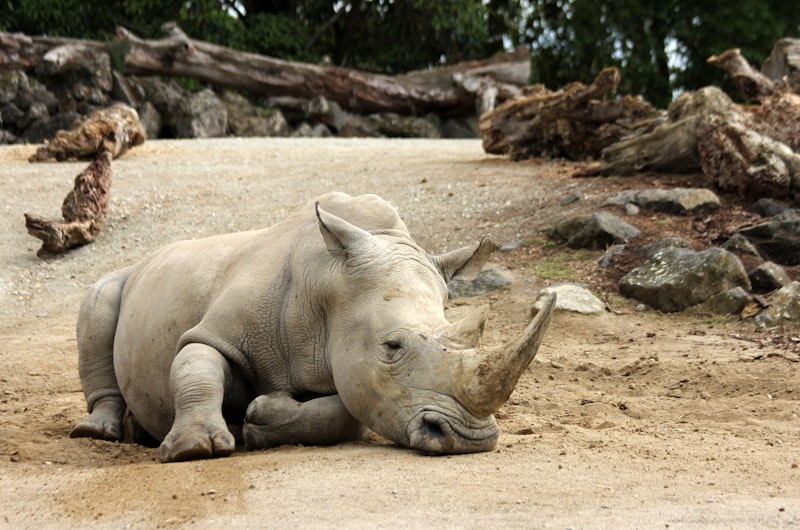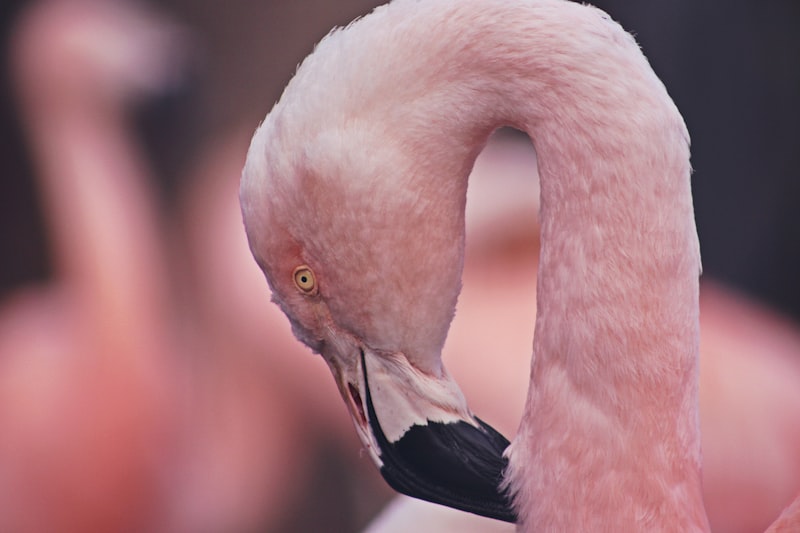Imagine stepping into a zoo—an immersive experience where the sights and sounds of exotic animals transport you to distant habitats. Beyond entertainment, zoos serve a deeper purpose: they educate visitors about endangered species and the threats they face. Through interactive exhibits and guided tours, visitors learn about conservation challenges and the importance of biodiversity.

One of the primary roles of zoos is breeding programs. Many species housed in zoos are endangered or threatened in the wild. Zoos provide a safe haven where these animals can breed and increase their numbers. Through careful breeding management, zoos aim to maintain genetically diverse populations, ensuring the survival of species that might otherwise face extinction.
Moreover, zoos contribute significantly to scientific research. By studying animal behavior, genetics, and health, researchers gain insights crucial for both zoo management and wildlife conservation. For instance, breakthroughs in reproductive technologies developed in zoos have been applied to aid wild populations.
Critics argue about the ethics of keeping animals in captivity. However, modern zoos prioritize animal welfare, providing enriched habitats that mimic natural environments. These environments promote physical and mental stimulation, ensuring the well-being of resident animals.
Zoos serve as vital institutions in the global effort to protect endangered species and preserve biodiversity. They inspire conservation action through education, contribute to scientific knowledge, and provide safe havens for endangered animals. As we navigate an increasingly interconnected world, the role of zoos in conservation remains indispensable.
Beyond Exhibits: How Modern Zoos Are Leading Conservation Efforts
One of the key roles modern zoos play is in the preservation of endangered species. With habitats under threat from human activities such as deforestation and climate change, many animal species face extinction. Zoos provide a safe haven for these animals, offering expert care, breeding programs, and sometimes reintroduction efforts into the wild. For instance, zoos like the San Diego Zoo have successfully bred critically endangered species like the California condor, ensuring their survival for future generations.
Moreover, zoos are vital educational centers. Through interactive exhibits, guided tours, and educational programs, they raise awareness about conservation challenges and inspire visitors to take action. Imagine being able to see a majestic Sumatran tiger up close and learning about the threats it faces in the wild due to habitat loss. Such experiences create empathy and motivate people to support conservation efforts both locally and globally.
In addition to conservation and education, zoos contribute significantly to scientific research. They collaborate with universities, research institutions, and conservation organizations to study animal behavior, genetics, reproduction, and disease prevention. These studies provide valuable insights that inform conservation strategies not just within zoo settings but also in natural habitats.
Furthermore, zoos foster partnerships with local communities and governments to promote conservation initiatives worldwide. They support habitat restoration projects, participate in wildlife rescue and rehabilitation efforts, and advocate for policies that protect endangered species. By engaging with stakeholders at various levels, zoos amplify their impact and contribute to broader conservation goals.
Modern zoos have transcended their traditional roles as exhibitors of wildlife. They are now champions of conservation, education, and research. Through their efforts, they strive to ensure that future generations can continue to marvel at the diversity of life on Earth.
Wildlife Sanctuaries in Urban Jungles: Zoos’ Conservation Impact
Zoos provide a sanctuary for animals that face threats in the wild, offering them a safe haven where they can thrive under expert care. This environment allows species like the majestic Bengal tiger or the playful chimpanzee to live comfortably and reproduce, contributing to their species’ survival.
Beyond their role in direct animal care, zoos are instrumental in conservation through breeding programs. These programs aim to increase the population of endangered species, ensuring genetic diversity and resilience against extinction. For instance, successful breeding programs have helped reintroduce species like the California condor back into their natural habitats.
Education is another cornerstone of zoo conservation efforts. By engaging visitors of all ages, zoos raise awareness about environmental issues and the importance of protecting wildlife. They offer interactive experiences that inspire empathy and understanding, fostering a connection between people and the natural world. Through guided tours, informative exhibits, and hands-on activities, zoos empower visitors to become advocates for conservation in their own communities.
Moreover, zoos contribute to scientific research that informs broader conservation strategies. Studying animal behavior, genetics, and health in controlled environments provides valuable insights into wild populations and ecosystem dynamics. This research supports initiatives to protect natural habitats and address threats such as habitat loss, poaching, and climate change.
From Captivity to Conservation: Zoos as Guardians of Endangered Species
Imagine a world where majestic creatures like the Sumatran tiger or the giant panda are merely memories in history books. Zoos step in as guardians of these endangered species, providing them with safe havens where they can thrive under expert care. By carefully managing breeding programs and habitats, zoos ensure that these animals not only survive but also have the opportunity to reproduce and increase their numbers.
Moreover, zoos are educational hubs where the plight of endangered species is brought to light. Visitors, young and old alike, are captivated by up-close encounters with these animals, fostering a connection that ignites passion for conservation. This hands-on experience can spark a lifelong commitment to protecting wildlife and their habitats, creating a ripple effect that extends far beyond zoo walls.
Critics argue that keeping animals in captivity contradicts the concept of conservation. However, zoos today prioritize animal welfare and species preservation above all else. Through research initiatives and partnerships with conservation organizations, they contribute valuable scientific knowledge that aids in the understanding and preservation of endangered species worldwide.
In essence, zoos have transformed from mere attractions to ultimate bastions of hope for endangered species. They bridge the gap between humans and wildlife, inspiring a collective effort to safeguard our planet’s biodiversity. As we navigate an increasingly fragile ecosystem, zoos remain steadfast in their commitment to ensuring that future generations inherit a world where every species, no matter how endangered, has a fighting chance to thrive.
Behind the Scenes: Innovations Driving Zoo Conservation Programs
Zoos today are not just places to see exotic animals up close; they’re also hubs of innovation in conservation efforts. Behind the scenes, these institutions are leveraging cutting-edge technologies and progressive methodologies to protect endangered species and their habitats.
One of the key innovations driving zoo conservation programs is the use of advanced veterinary care. Veterinarians at modern zoos are equipped with state-of-the-art medical facilities, allowing them to provide specialized treatments and surgeries to animals in need. This level of care helps in rehabilitating injured wildlife and improving the overall health of species under threat.
Furthermore, zoos are increasingly adopting behavioral enrichment programs. These initiatives aim to stimulate natural behaviors in captive animals, keeping them mentally and physically active. For instance, puzzle feeders and scent trails mimic natural hunting and foraging behaviors, promoting mental stimulation and physical exercise. By enriching the lives of animals, zoos contribute to their overall well-being and increase their chances of successful breeding and reintroduction into the wild.
In addition to hands-on care, zoos are embracing genetic research and breeding programs to safeguard endangered species. Through partnerships with universities and conservation organizations, zoos participate in breeding programs that maintain genetic diversity and prevent inbreeding among captive populations. These efforts are crucial for sustaining healthy populations that can potentially be reintroduced into protected habitats.
Moreover, zoos are pioneering habitat restoration projects both locally and internationally. By collaborating with local communities and conservation groups, zoos contribute to reforestation, wetland restoration, and other ecosystem rehabilitation efforts. These projects not only benefit the targeted species but also support biodiversity conservation on a larger scale.
Saving Species: Zoos’ Crucial Role in Global Biodiversity Conservation
One of the primary functions of zoos in biodiversity conservation is their role in breeding endangered species. Many species housed in zoos are critically endangered in the wild due to habitat loss, poaching, and other human activities. Zoos provide a safe environment where these animals can breed and raise their young without the threats they face in the wild. By carefully managing breeding programs, zoos aim to increase the population numbers of endangered species and reintroduce them into their natural habitats whenever possible.
Additionally, zoos play a crucial role in public education and awareness. Visitors to zoos not only get to see exotic animals up close but also learn about their habitats, behaviors, and the challenges they face in the wild. This educational experience fosters empathy and understanding among the public towards wildlife conservation issues. Zoos often engage in outreach programs, school visits, and conservation-themed events to further raise awareness about the importance of biodiversity and the actions needed to protect it.
Furthermore, zoos contribute to scientific research and conservation efforts through collaborations with universities, wildlife agencies, and other conservation organizations. Research conducted in zoos helps scientists better understand animal behavior, genetics, and reproductive biology, which are critical for developing effective conservation strategies both in captivity and in the wild. These research findings often inform habitat restoration projects and conservation initiatives aimed at protecting endangered species and their ecosystems.

Zoos serve as invaluable institutions in the global effort to conserve biodiversity. Through their roles in breeding endangered species, educating the public, and conducting scientific research, zoos play a significant part in safeguarding threatened wildlife and ecosystems for future generations.
Educating Future Guardians: Zoos’ Role in Conservation Awareness
Imagine stepping into a zoo, where every enclosure tells a story of endangered species teetering on the brink of extinction. The majestic tigers, once roaming freely in the wild, now find refuge in carefully recreated habitats, teaching visitors about their natural behaviors and the threats they face. Such experiences not only captivate young minds but also cultivate a sense of responsibility towards preserving biodiversity.
Through interactive exhibits and guided tours, zoos bring conservation to life. Visitors are encouraged to ponder questions like, “What can I do to protect these magnificent creatures?” This engagement fosters empathy and a desire to take action, whether through supporting conservation initiatives or making sustainable lifestyle choices.
Moreover, zoos contribute significantly to scientific research and species preservation efforts. They serve as living laboratories where researchers study animal behavior, reproduction, and habitat needs. By partnering with global conservation organizations, zoos actively participate in breeding programs aimed at reintroducing endangered species into their native habitats.
Critics argue about the ethical implications of confining animals. Yet, responsible zoos prioritize animal welfare, ensuring that enclosures mimic natural habitats and provide enrichment activities to stimulate physical and mental well-being.
Zoos are more than just attractions; they are vital educational centers that inspire future guardians of our planet. By fostering a love for wildlife and promoting conservation awareness, zoos empower individuals to become advocates for a sustainable future where humans and animals coexist harmoniously.
Frequently Asked Questions
Why are zoos important for endangered species?
Discover why zoos play a crucial role in conservation efforts for endangered species. Learn how they provide safe environments for breeding, research, and education to ensure the survival of at-risk animal species.
How do zoos educate the public about conservation?
Zoos educate the public about conservation through interactive exhibits, educational programs, and species preservation efforts. Visitors learn about endangered species, habitat conservation, and sustainability practices, fostering awareness and inspiring action to protect wildlife and the environment.
How do zoos contribute to species preservation?
Learn how zoos contribute significantly to species preservation through conservation breeding programs, education initiatives, and scientific research. Discover their role in protecting endangered species and promoting biodiversity globally.
What is the purpose of zoos in conservation efforts?
The purpose of zoos in conservation efforts is to safeguard endangered species by providing controlled environments for breeding, research, and education. Zoos collaborate globally to preserve biodiversity and raise awareness about threats to wildlife.
What conservation programs do zoos participate in?
Learn about the various conservation programs that zoos actively participate in to protect endangered species and promote biodiversity worldwide.


